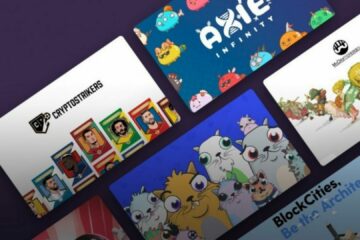As the world of block chain and decentralized networks continues to grow, innovations continue to emerge at an accelerated pace. One such innovation is Non-Fungible Tokens (NFTs). These are tokens that have a unique identifier or “fingerprint” that distinguishes them from other tokens on the network. A recent example of how NFTs can be used was when Twitter founder Jack Dorsey put an autographed tweet up for sale as an NFT on March 11th, 2021. The winning bidder would not receive a sculpture or painting, but instead an NFT digital token with its own identity tag. This particular case shows how these types of tokens are being more widely accepted.
What are NFTs?
A non-fungible token (NFT) is a type of digital asset designed to represent goods and services. Unlike regular cryptocurrencies, which can be easily exchanged for other currencies or commodities due their fungibility—that means they’re all supposed look exactly alike—non fungibles have unique properties that make them stand out from others: you cannot change the value associated with your tokens unless it’s somehow changed in its original state; if I give my genuis friend Bob $20 worth CoinJoin his 20 coin javasciosamnsd set him back.
So how does this work?
A Non-Fungible Token is an item that has its own unique attributes and functions – similar to any other asset on the market. In simpler terms, it’s like owning your very own game card for Tron in which you can carry out transactions with!
So how does this work? Well there are many different types of NFTs but most importantly they’re stored digitally using blockchains such as Ethereum’s blockchain system; however, some may also exist outside these networks too -such as TRON who have implemented their version onto the platform where players trade digital assets just like real life currencies would be traded face-toes.
NFTs are seen as a unique asset that can be traded until the owner wants to retain the token for themselves which is later linked up with smart contracts on blockchains.
While there are many different types of tokens, each one is considered non-fungible because it has its own set of unique attributes or ownership. These tokens can be used to represent different things, like virtual assets in a game, or they could be used as collectibles representing digital artwork or anything else that has value.
Why are NFTs unique?
NFTs are unique because they can’t be easily duplicated. Digital files, on the other hand seem to have no limitations when it comes down their numbers or replaceability which makes them less valuable in some cases compared with NFT content that could only ever engender one specific emotional response from its audience; this would explain why certain art works such as paintings often fetch higher prices than others who may offer similar services eithr through quality alone although there is much debate over whether any given piece truly represents “greater” value per square inch (PSI) – despite what marketeers might tell you otherwise!
When it comes to NFTs, there are many complexities that can’t be overlooked. One example is a piece of art which has been “tokenized” – this means the artist created specific tokens for each individual owner so they would know where their ownership resides and what rights come with owning such as whether or not its limited edition!
In the world of digital assets, one can own a copy and not just an original. Ownership is transferred to the new owner when they purchase it from you – this means that there’s no way for anyone else besides yourself (or perhaps their heirs) to ever regain control over your NFTs once sold or given away because each item has its own unique key pair created by both parties at registration time which confirms ownership along with other relevant information such as date acquired etcetera; so even if somebody hacks into our database later on we’ll still know who did since everything gets stored securely behind encryption algorithms.
Are NFTs a worthwhile investment?
NFTs have gained momentum and many people are considering investing in these unique coins. But there’s still uncertainty about the long-term stability, environmental impact of maintaining blockchain for NFTs as well as how it can be beneficial to society at large when all assets exist online with no physical form or representation.
The future holder may face scrutiny since his/her investment is not tangible; however, if you’re looking into alternative investments then this could potentially become an advantage because nothing would need restoration from archives which means less energy consumption due entropic decay over time.
Cryptocurrencies are great, but they come with some downsides. For example, the Proof-of-Work blockchain system used by most cryptocurrencies has been criticized for its higher carbon footprint and reduced energy efficiency when compared to a proof of stake one which would be more efficient because you aren’t having transactions verified as often in order keep up with demand like this might take longer than if everything was happening all at once!
One thing that hasn’t changed about the world of cryptocurrency is people’s appetite for new and interesting ways to invest in this rapidly growing space. NFTs, or non-fungible tokens have become one such option as they allow users not just ownership but actual possession over digital items like art pieces from independent artists around the globe who may never even meet each other yet have created their own unique collectibles with which only someone else can trade – owning an asset has always been about more than what you paid for it: whether it’s at auction where there are no returns; on eBay after years of waiting list bidding wars end when somebody makes a bid within your price range.
NFTs are currently a very hot topic in the crypto world, with some being worth tens of millions. Whether they’ll last longer than other trends remain questionable though as their value can change rapidly based on market sentiment and investor confidence levels rise again just to fall back down below previous prices at any given time.



0 Comments